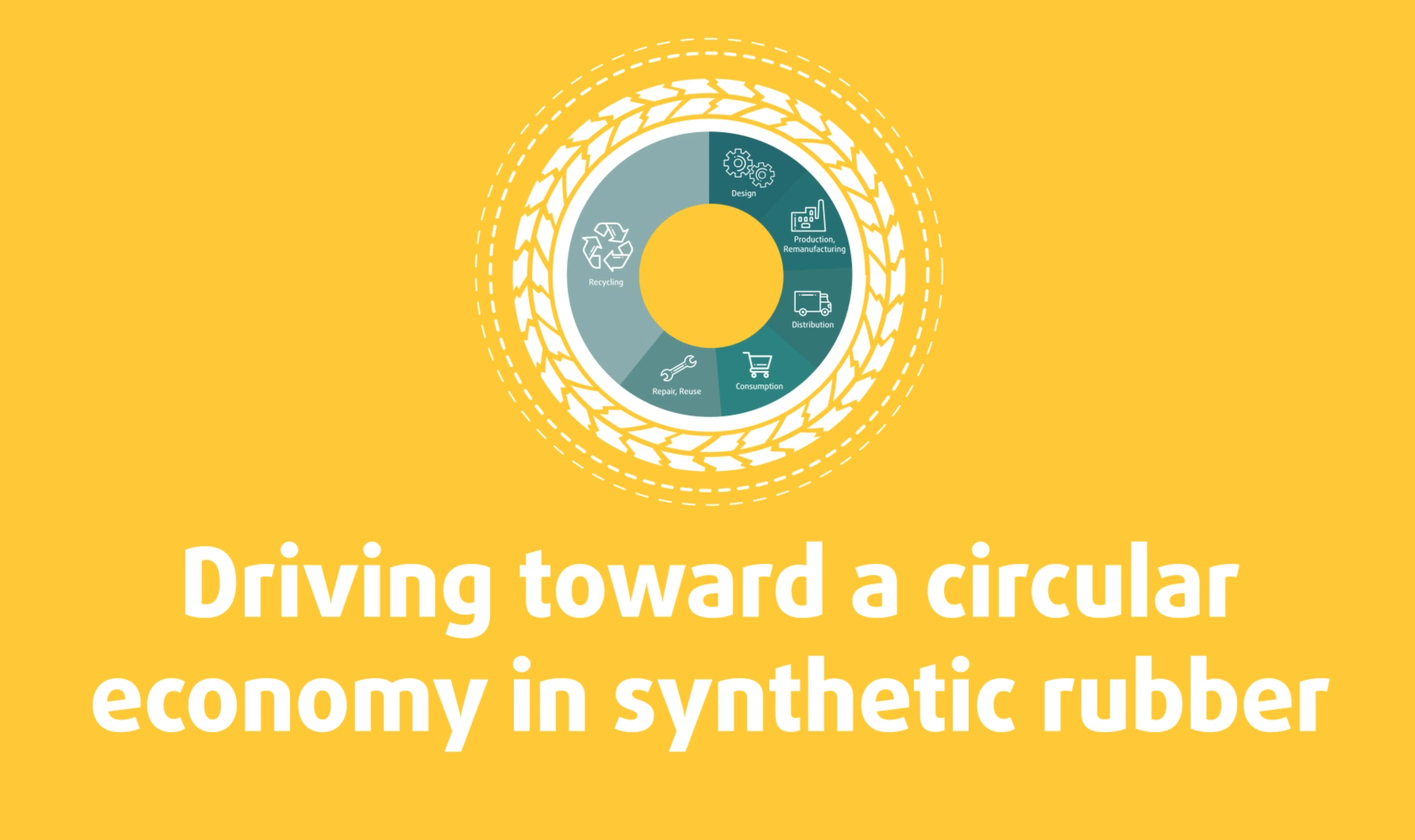February 24, 2020
Driving towards a circular economy in synthetic rubber
The following was published on February 24, 2020 as a LinkedIn blog post by Sandra Hofmann, Director Technology & Innovation Synthetic Rubber.

 Sandra Hofmann, Director Technology & Innovation Synthetic Rubber
Sandra Hofmann, Director Technology & Innovation Synthetic Rubber
This week during Tire Tech 2020, we look forward to speaking with our peers and customers about the important trends in the automotive industry. We expect that sustainability will be a hot topic, and the important role that material providers play in supporting tire industry companies to deliver solutions that are as high performing as they are sustainable.
At Trinseo, sustainability is intrinsic to what we do each day, and our recent adaptation of the Global Reporting Index for sustainability reporting is an indicator of that. What I find equally important as our company’s sustainability measures, though, is how we are collaborating and innovating with our customers to deliver future-oriented, sustainable solutions for the automotive industry.
Driving the future of sustainability
We see disruptive megatrends transforming the global mobility industry covered underneath ACES (autonomous driving, connectivity, electrification and shared mobility) that push several challenges into the automotive value chain, through both legislative pressures and customer demand.
Over 90 percent of the greenhouse gas footprint across the tire life cycle is linked to the actual usage, making improved fuel efficiency—much of which is accomplished by lower rolling resistance— a very relevant step towards more sustainable tires and eventually road transport. Our focus on functionalized SSBR for energy efficient tires contribute to significantly reduced CO2 emissions in the tire use phase for ICE or translating into extended driving range for electric vehicles.
I’ve seen first-hand how collaboration with our customers on their goals has resulted in new products that are changing the landscape of the synthetic rubber market. An example is SPRINTAN™ 918S launched in 2019, as a response to mitigate the higher CO2 emissions generated in the growing premium vehicle and SUV market. The product delivers excellent mechanical properties, with processability at par with non-functionalized SSBR, and the reduced oil concentration improves flexibility for tire compounders for a range of plasticizer.
Moving beyond performance into composition
While we are actively developing solutions that will help our customers meeting short- and long-term sustainability goals, we are also focused on delivering future-oriented solutions that enable customers to design around future trends—many of which are sustainability-focused, like electrification and shared mobility—with products that have true market differentiation.
To continue to compete in the market and deliver solutions that meet the needs of our customers, we have to offer solutions that will help to build a circular economy around tires—which is a challenge for highly filled, crosslinked rubber formulations. We are up for the challenge and are committed to helping our customers meet their ambitious goals. To do that, we are exploring bio-based feedstocks for the manufacturing of some of our S-SBR products to provide our customers eventually with fully sustainable alternatives.
The key driver to Trinseo’s success—and to so many of our customers—is a focus on sustainability. We look forward to sharing more about our efforts this week at Tire Tech and in the months to come.

 Sandra Hofmann, Director Technology & Innovation Synthetic Rubber
Sandra Hofmann, Director Technology & Innovation Synthetic Rubber